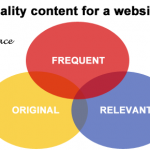Although not a brand new invention, until recently, creating an adaptive site (or responsive design if you prefer) was considered something to be left to large companies, so of little interest to small businesses seeking their own small space on the web.
If you have been using the web for at least 7-8 years you will have seen websites that are fixed or variable (which see the contents “explode” onto large screens), sites that are too small for your screen or too big for your screen, sites that were fine with 1024 × 780, 640 × 480 (ok, I’m showing my age here!)….sites that, if navigated with your smartphone would hardly allow you to see a quarter of a photo or an eighth of the main menu, forcing you to slide from right-left (already detestable on a PC) ….. or, if you have your own website, maybe you’ve been forced to create a parallel mobile version of your site that is smaller and more agile. Inflexible choices in website design, in practice, dictated the device that had to be used to view the site, but not anymore.
Thanks to responsive design, a website can adjust automatically to the size of the screen on the device that receives it, while maintaining pretty good graphics.
The new HTML 5 standard, with its graphic flexibility, is contributing significantly to the spread of responsive sites (or adaptive if you prefer!) but it is smartphones, and the lowering costs of connecting to the Internet via mobile phone, that have accelerated the evolution of this programming technique/design, bringing it to the masses.
Nowadays users who are connecting to social networks are doing so mainly via smartphones, and having a site that is able to respond to this trend can certainly give you the edge on your competitors.
So, when you put your next site online…. be flexible!
by INFINITY


